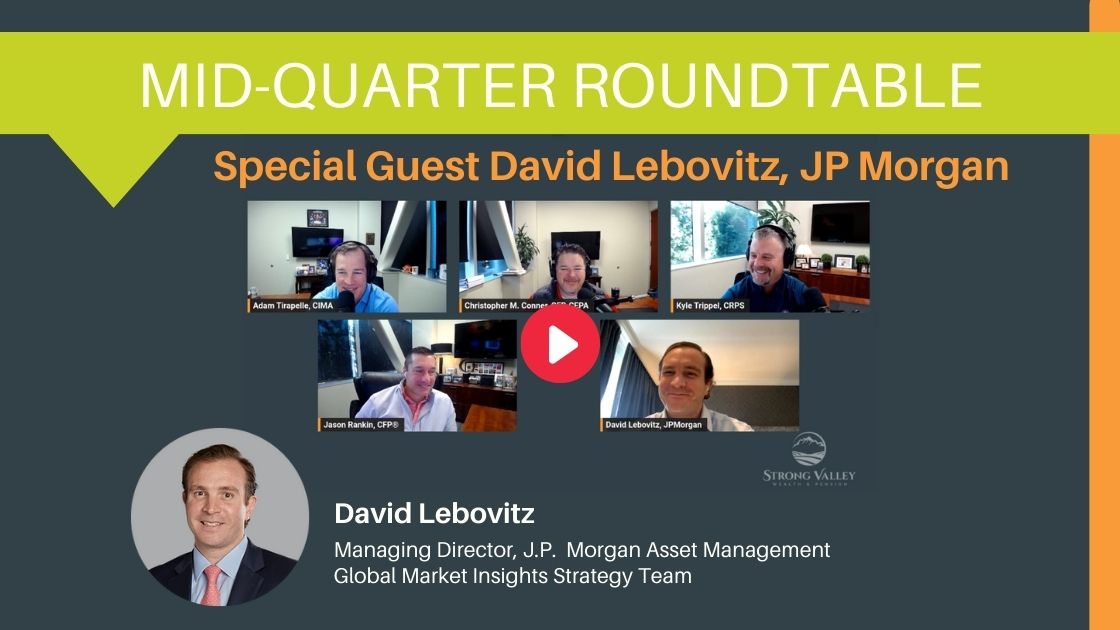You are now leaving the Strong Valley Wealth & Pension, LLC ("Strong Valley") website. By clicking on the "Schwab Alliance Access" link below you will be entering the Charles Schwab & Co., Inc. (“Schwab”) Website. Schwab is a registered broker-dealer, and is not affiliated with Strong Valley or any advisor(s) whose name(s) appears on this Website. Strong Valley is/are independently owned and operated. Schwab neither endorses nor recommends Strong Valley. Regardless of any referral or recommendation, Schwab does not endorse or recommend the investment strategy of any advisor. Schwab has agreements with Strong Valley under which Schwab provides Strong Valley with services related to your account. Schwab does not review the Strong Valley website(s), and makes no representation regarding the content of the Website(s). The information contained in the Strong Valley website should not be considered to be either a recommendation by Schwab or a solicitation of any offer to purchase or sell any securities.

Have you considered the benefits of giving back? This article explores the benefits and practical steps for engaging with this global movement. Discover ways you can contribute and be involved in Giving Tuesday! Find out everything you need to know to make a difference!

Giving Tuesday, celebrated annually on the first Tuesday after Thanksgiving, is a global movement that inspires individuals, families, and organizations to contribute to causes they care about. This year, on December 2, 2025, people around the world will unite to give back – whether through donations, volunteer work, or acts of kindness.
As this special day approaches, it’s an ideal time to reflect on how charitable giving fits into your financial plan. Giving should be more than an afterthought; it can be a deliberate and fulfilling aspect of your financial goals.
1. It Aligns Values with Finances
Charitable giving allows people to support causes that resonate with their personal values. By integrating philanthropy into financial planning, it ensures money is working towards creating change in the places that matter most.
2. Tax Benefits
Contributions to qualified charities can provide significant tax advantages. Depending on the financial situation, donations may be deductible from taxable income, reducing the overall tax liability. Strategic planning helps to maximize these benefits while staying within budget.
3. Teaches Generosity and Financial Responsibility
When giving is included in the financial strategy, it sets an example for family members, particularly children. It teaches them the importance of generosity while reinforcing the principles of budgeting and financial discipline.
4. Supports Long-Term Goals
Charitable giving doesn’t have to conflict with other financial priorities, such as saving for retirement or education. When done thoughtfully, it complements the overall financial objectives, ensuring long-term success and impact.
1. Set a Budget for Giving
Treat donations like any other financial commitment. Determine a percentage of income or set a fixed amount to allocate to charity each year. This ensures giving remains intentional and affordable.
2. Choose Causes Wisely
Focus on charities that align with personal values and that have a clear impact. Research organizations to ensure they are reputable and use donations effectively. Websites like Charity Navigator and Guidestar can help with evaluating nonprofits.
3. Use Strategic Timing
While Giving Tuesday is a wonderful opportunity to make donations, consider spreading contributions throughout the year. This enables a bigger impact when there are matching donation campaigns or seasonal needs, such as winter shelters or back-to-school programs.
4. Leverage Employer Matching Programs
Many employers match charitable contributions made by their employees. Check with the HR department to see what programs are available and the requirements for participating.
5. Consider Donor-Advised Funds (DAFs)
DAFs allow lump sum donations with an immediate tax deduction, and the ability to distribute the funds anonymously to different charities. This option is good for reducing taxable income in the current year while streamlining giving over time.
6. Monitor and Adjust
Regularly review the financial plan to ensure giving goals are aligned with the current financial situation. Adjust as needed, based on changes in income, expenses, and priorities.
Giving Tuesday is more than a single day of generosity – it’s a reminder of the power of collective giving. By incorporating philanthropy into your financial plan, you create a sustainable way to support meaningful causes while maintaining financial stability. This December 2nd, take a moment to give thoughtfully, making sure that your generosity is both impactful and aligned with your long-term financial goals. Whether you contribute funds, time, or resources, you can make a difference.



